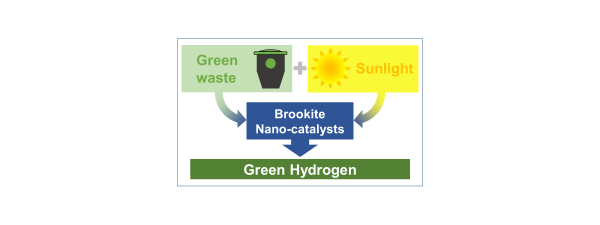Hydrogen has been referred to as the fuel of the future for decades. Its use in fuel cells, for example, ensures the production of electricity without the emission of pollutants. The main reason for the slow development of the "hydrogen economy" is linked to the scarce competitiveness of the price of hydrogen produced with sustainable alternative processes (for example water electrolysis and water splitting using sunlight). In recent years, the trend has radically changed thanks to a common awareness and ambitious sustainable policies such as the European Union's Green Deal and the National Recovery and Resilience Plan (PNRR), which are boosting the sustainable energy transition.
Among the many technologies for the production of hydrogen which compete with the prevailing technology based on the thermal reforming of methane, the photoreforming of water and alcohols deriving from biomass waste is of primary importance. Thanks to this technology it is possible not only to obtain a greater production of hydrogen compared to traditional water splitting, but also to transform waste chemical compounds into products with added value.
In this context, a study was recently published in Chem Catalysis by the research team led by Paolo Fornasiero of the University of Trieste and the Trieste unit of the ICCOM-CNR Institute, by Alberto Naldoni and Michal Otyepka of the Czech Advanced Technology and Research Institute of Olomouc, in collaboration with Paolo Moras of the ISM-CNR Institute, who manages the VUV-Photoemission beamline at Elettra Sincrotrone Trieste.
The study provides an important foundation for developing photocatalytic processes, which exploit sunlight and sustainable and low-cost resources, already integrated in the industrial production cycle, such as biomass derivatives, to produce green hydrogen. The development of these integrated processes will favor a decrease in the cost of hydrogen produced by photocatalysis, making it more competitive than that produced with the other technologies used so far. This is a further important contribution to a faster transition towards energy sustainability.


 English (UK)
English (UK)  Italiano (Italia)
Italiano (Italia)